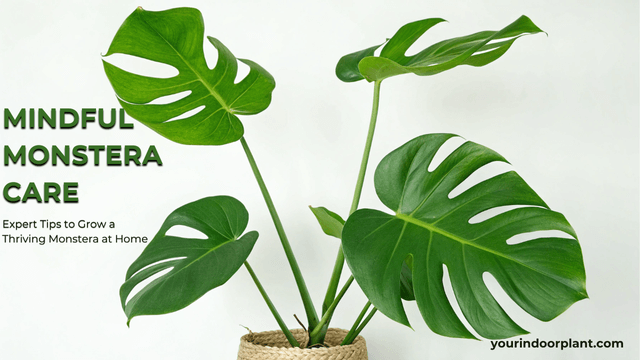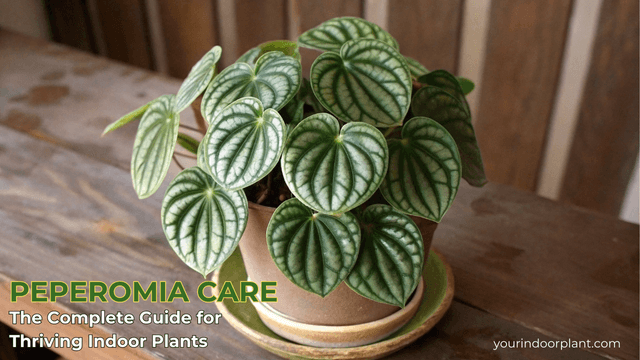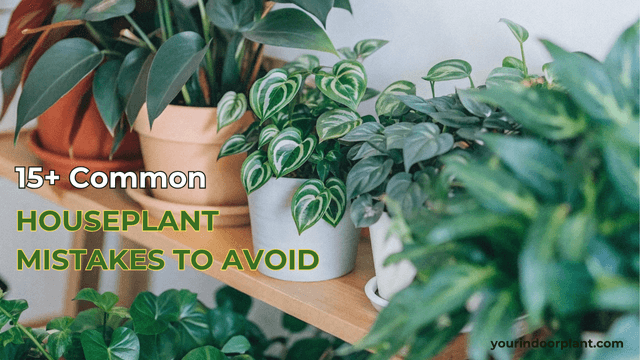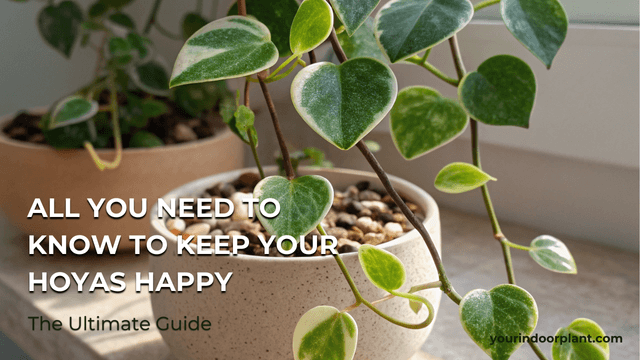Rare Plant Care Made Easy: What Every Enthusiast Needs to Know
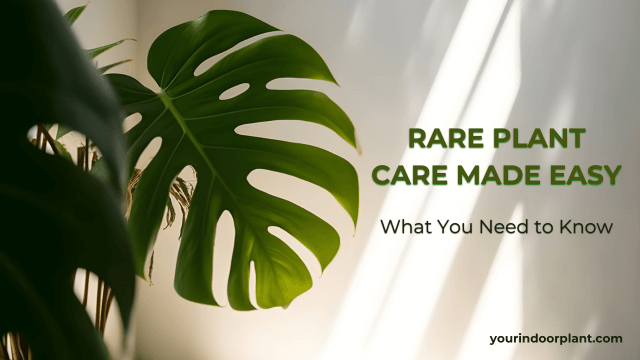
Rare plant care is our passion here at “Your Indoor Plant.” We’re obsessed with the unique, the extraordinary, and the utterly stunning. Rare indoor plants aren’t just beautiful — they’re living art. Whether you’ve just adopted your first Philodendron McDowell or you’re collecting unicorns like the Anthurium Warocqueanum, this quick but powerful guide is your go-to for keeping your plant treasures thriving.
From velvety foliage to wildly fenestrated leaves, rare houseplants bring tropical charm and personality to any space — but they do have their quirks. That’s why we’ve rounded up our favorite rare indoor plants and paired each with expert-backed plant care tips for collectors who want to master the art of tropical foliage care at home.
Our Top Rare Indoor Plants
1. Anthurium Clarinervium
Velvety drama + bold veins = instant showstopper
With heart-shaped leaves and high-contrast veins, the Anthurium Clarinervium looks like it stepped out of a jungle photoshoot. Native to Mexico, this beauty likes things warm, a little humid, and bright — but never direct sun.
Care Tips:
- Light: Bright, filtered sunlight. Avoid harsh rays.
- Water: Keep soil lightly moist, but never soggy. Let the top inch dry out.
- Humidity: Loves 60–80%. A pebble tray or small humidifier is a great gift.
Note: Anthuriums are toxic to pets and curious kiddos, so keep this one up high and out of reach.
2. Monstera Obliqua (Peru Form)
Rare, delicate, and full of holes (on purpose!)
The Monstera Obliqua is legendary for its dramatic fenestrations — those iconic Swiss cheese-like holes. But don’t let the fragile look fool you; it’s a determined little grower if you give it the right care.
Care Tips:
- Light: Bright, indirect. Filtered sun works best.
- Water: Keep evenly moist, but let the top 2 inches dry slightly before watering again.
- Humidity: Needs high humidity (think 70%+). A sealed glass case or cabinet works wonders.
Handle with care — the leaves are extremely delicate and tear easily. Bonus: it’s a climber, so moss poles are welcome.
Read more about How to Care for Monstera
3. Hoya Kerrii Variegata
Succulent hearts with creamy borders = love at first sight
Known as the “Sweetheart Plant,” the Hoya Kerrii is a slow but steady grower with thick, heart-shaped leaves edged in creamy variegation. She’s a bit of a diva about sunlight but otherwise low-key.
Care Tips:
- Light: Bright, indirect. Can handle morning sun.
- Water: Let dry out between waterings (around 10–14 days).
- Humidity: Average indoor humidity is fine, but she appreciates a mist now and then.
Keep an eye on her variegation — if it starts to fade, she might need a sunnier seat.
Read our Ultimate Hoya Care Guide
4. String of Dolphins (Senecio Peregrinus)
Yes, those leaves look like tiny dolphins!
This playful succulent is a favorite in hanging pots, where it spills over the edge in waves of aquatic charm. But don’t let the cute fool you — String of Dolphins is picky about light and water.
Care Tips:
- Light: Needs at least 6 hours of bright light daily. Filtered sunlight is best.
- Water: Water deeply, but only once soil is completely dry. About every 2–3 weeks.
- Humidity: Prefers drier air — over-humid conditions can cause rot.
Caution: Like most Senecios, it’s toxic to pets. Hang it high!
5. Philodendron McDowell
Big, bold leaves + trailing vibes = instant jungle
With oversized heart-shaped leaves and distinct white veins, the Philodendron McDowell is a favorite among collectors. While it looks dramatic, it’s surprisingly easygoing — as long as it gets what it wants.
Care Tips:
- Light: Indirect and consistent. Too much sun = leaf burn.
- Water: Let the top layer of soil dry out, but don’t let the pot go bone dry.
- Humidity: 50–70% is the sweet spot. It’ll thank you with lush growth.
Bonus: Give it a wide pot and let it sprawl — it loves to stretch!
6. Peperomia
From the ripple-leaved Watermelon to the dainty Raindrop and Frost, rare Peperomias are small in size but big on charm. Their low-maintenance nature makes them ideal for shelves, desktops, and tight spaces.
Care Tips:
- Light: Bright, indirect light helps colors pop. Too dark? Growth slows and leaves dull.
- Water: Allow the top inch of soil to dry out. They hate soggy roots.
- Humidity: Average room humidity is fine, but they’ll perk up with 40–50%.
- Bonus: These beauties love snug pots. No rush to repot — they thrive a little root-bound.
👉 Dive into the full Peperomia Care Guide to unlock care strategies for Cupid, Parallel, Sweet & Sour, and more.
🔧 Rare Plant Troubleshooting Chart
| Symptom | Likely Cause | Solution |
| Yellow leaves | Overwatering | Reduce frequency; improve drainage |
| Brown crispy tips | Low humidity | Mist, humidifier, move to bathroom |
| Drooping | Underwatering or shock | Check root moisture; reduce movement |
| Stunted growth | Nutrient deficiency | Light fertilization (1/4 strength) |
| Leaf curl or bleach | Direct sun exposure | Move to filtered light spot |
🐾 Are Rare Plants Safe for Pets?
| Plant | Toxic to Pets? |
| Monstera Obliqua | ✅ Yes |
| Philodendron McDowell | ✅ Yes |
| Hoya Kerrii | ⚠️ Mildly |
| String of Pearls | ✅ Yes |
| Anthurium Clarinervium | ✅ Yes |
| Peperomia | ✅ Yes |
Tip: Place rare plants on elevated shelves or in hanging planters away from curious paws and small children.
Quick Rare Plant Care Tips to Keep Them Thriving
✔️ Rotate plants every couple of weeks to encourage even growth
✔️ Use distilled or rainwater if your tap is high in minerals
✔️ Group humidity-loving plants together for a microclimate boost
✔️ Dust those gorgeous leaves monthly — clean leaves = better photosynthesis!
✔️ Feed with diluted fertilizer once a month during the growing season
Safety First!
Most rare indoor plants are toxic to pets and humans if ingested. Always place them out of reach and avoid skin contact with sap during pruning.
Final Thoughts
Rare plants might look high-maintenance, but with the right attention (and maybe a misting bottle or two), they’ll thrive beautifully in your home. Each species has its own rhythm, so take the time to observe and adjust — especially when it comes to finding the best humidity for rare plants, which can make all the difference in growth and longevity.
Remember, you’re not just caring for a plant — you’re curating a living collection. With these plant care tips for collectors, you can confidently build a lush, tropical indoor oasis filled with rare houseplants that flourish year-round.
Which rare beauty are you adding to your shelf next? Want more rare plant care tips like this? Join the Rare Leaf Haven newsletter for monthly guides and collector updates.
Check out these related articles:
- Best Humidifiers for Rare Houseplants
- Top 5 Mistakes in Rare Plant Care


